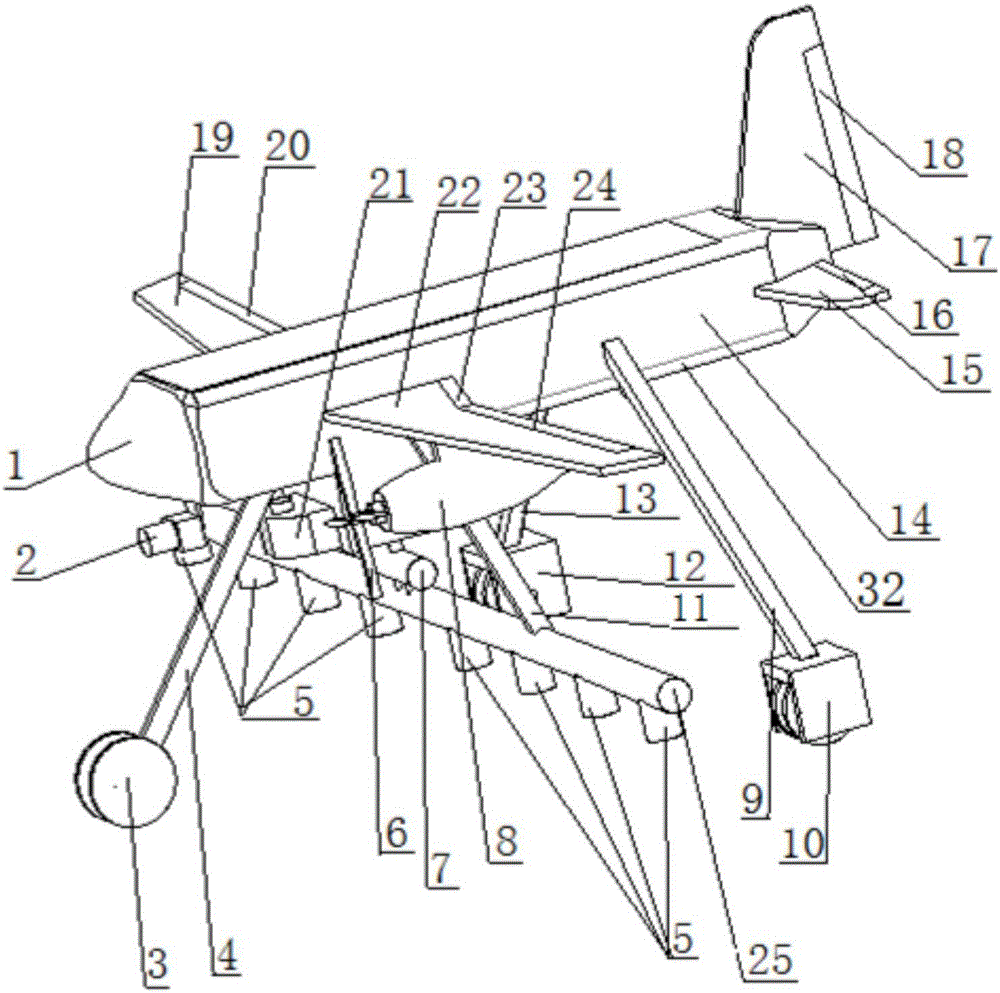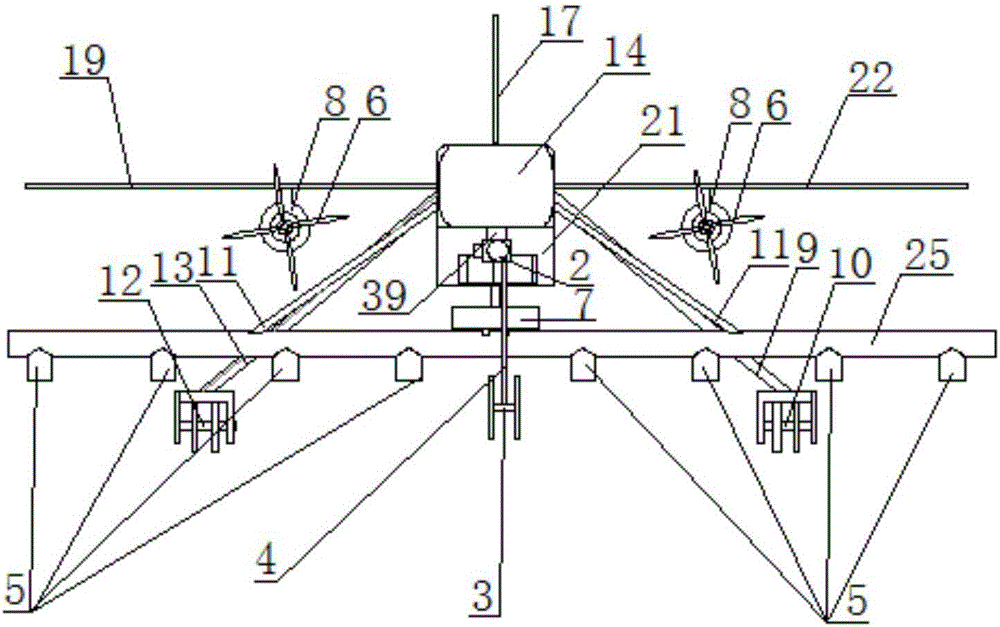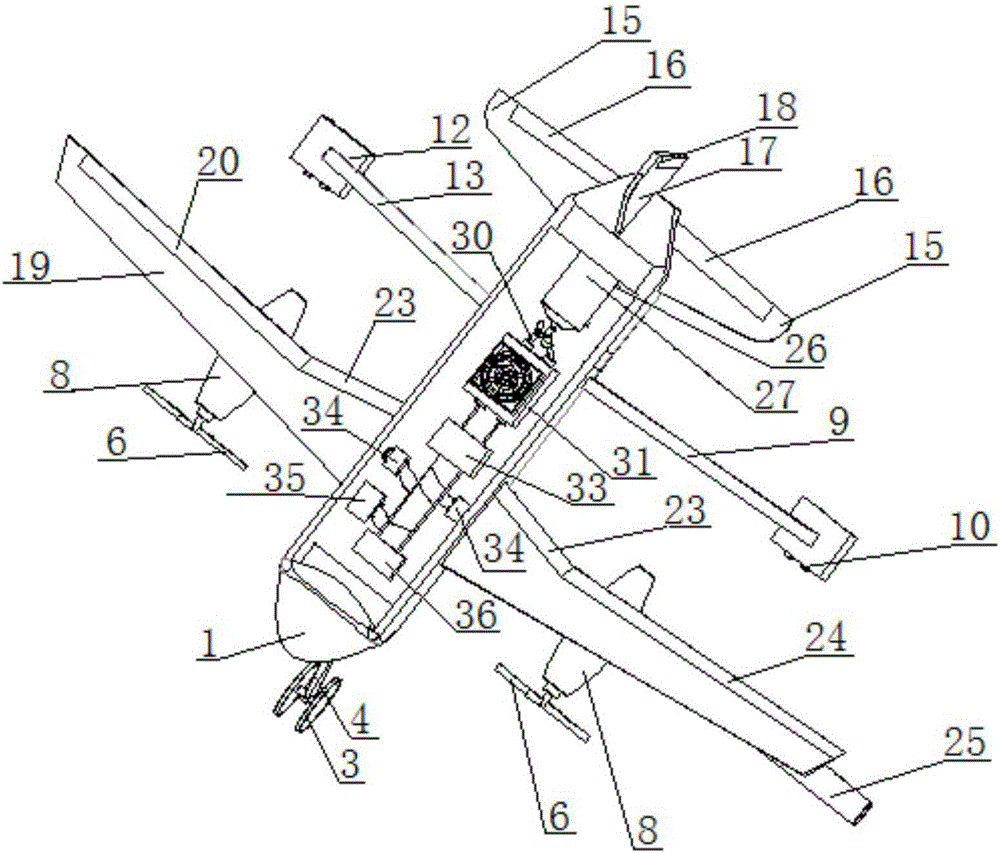Fixed-wing fuel-cell unmanned aerial vehicle for plant protection
A technology for planting and protecting drones and fuel cells, applied in rotorcraft, unmanned aerial vehicles, wings, etc., can solve the problems of many battery replacements, single power source, insufficient safety performance, etc., to ensure the spraying effect, Optimize the wing structure and spray reasonably and effectively
- Summary
- Abstract
- Description
- Claims
- Application Information
AI Technical Summary
Problems solved by technology
Method used
Image
Examples
Embodiment Construction
[0025] The present invention will be further described in detail below with reference to the drawings and specific embodiments.
[0026] Such as figure 1 and figure 2 As shown, the fixed-wing fuel cell plant protection UAV of the present invention includes a fuselage bottom plate 32, a fuselage 14 mounted on the fuselage bottom plate 32, a nose connected to the fuselage 14, and a lower part of the front section of the fuselage 14. Front frame 4, first wing plate 19 and second wing plate 22 symmetrically installed on both sides of the middle section of fuselage 14, first rear frame 9 and second rear frame 13 symmetrically installed on the lower part of the rear section of fuselage 14 And the tail wing installed at the tail of the fuselage 14, the lower ends of the first wing plate 19 and the second wing plate 22 are both installed with a rotor motor 8. The output shaft of the rotor motor 8 is installed with a rotor 6 and the lower end of the nose 1 passes through a camera bracket ...
PUM
 Login to View More
Login to View More Abstract
Description
Claims
Application Information
 Login to View More
Login to View More - R&D
- Intellectual Property
- Life Sciences
- Materials
- Tech Scout
- Unparalleled Data Quality
- Higher Quality Content
- 60% Fewer Hallucinations
Browse by: Latest US Patents, China's latest patents, Technical Efficacy Thesaurus, Application Domain, Technology Topic, Popular Technical Reports.
© 2025 PatSnap. All rights reserved.Legal|Privacy policy|Modern Slavery Act Transparency Statement|Sitemap|About US| Contact US: help@patsnap.com



